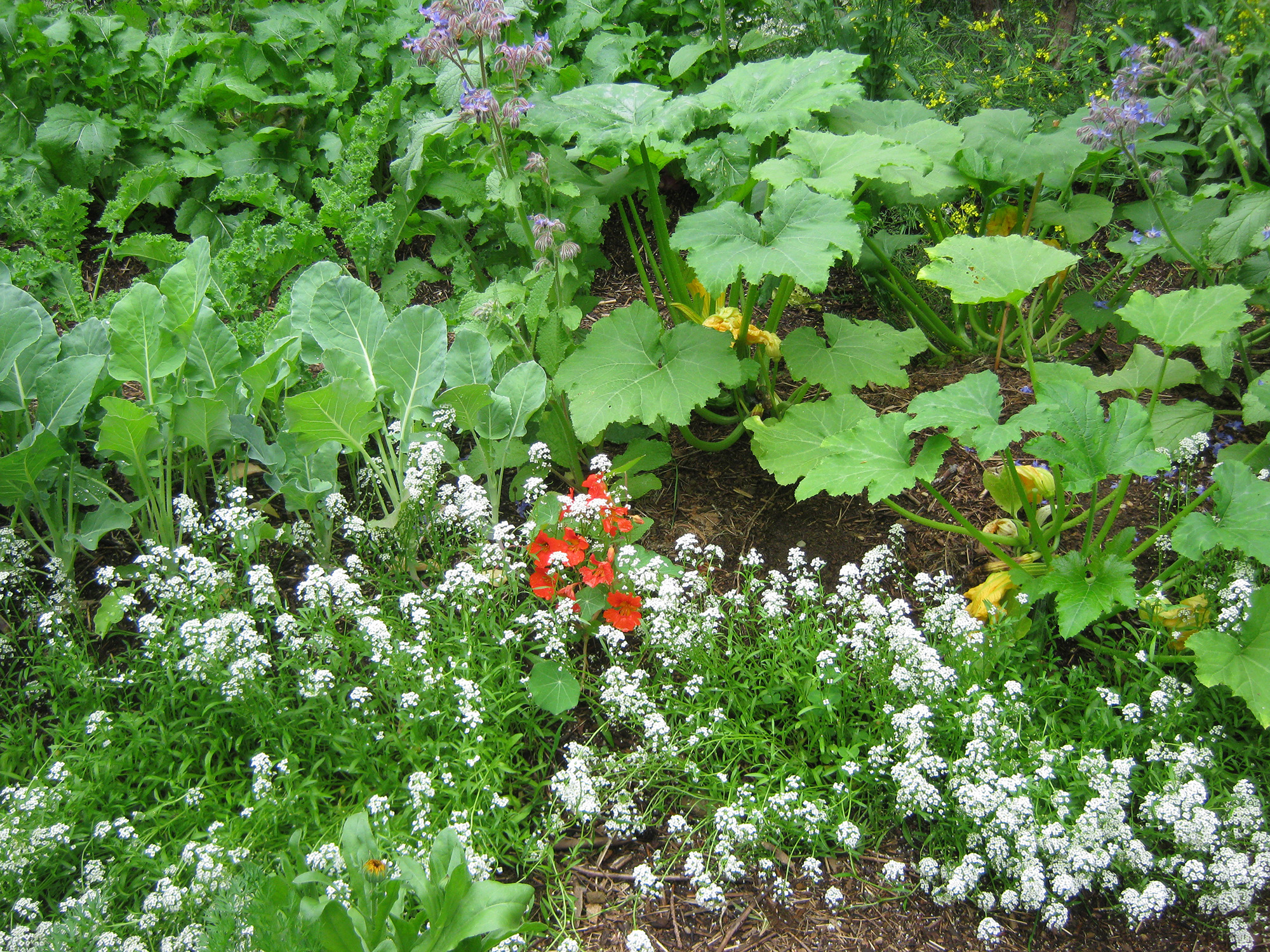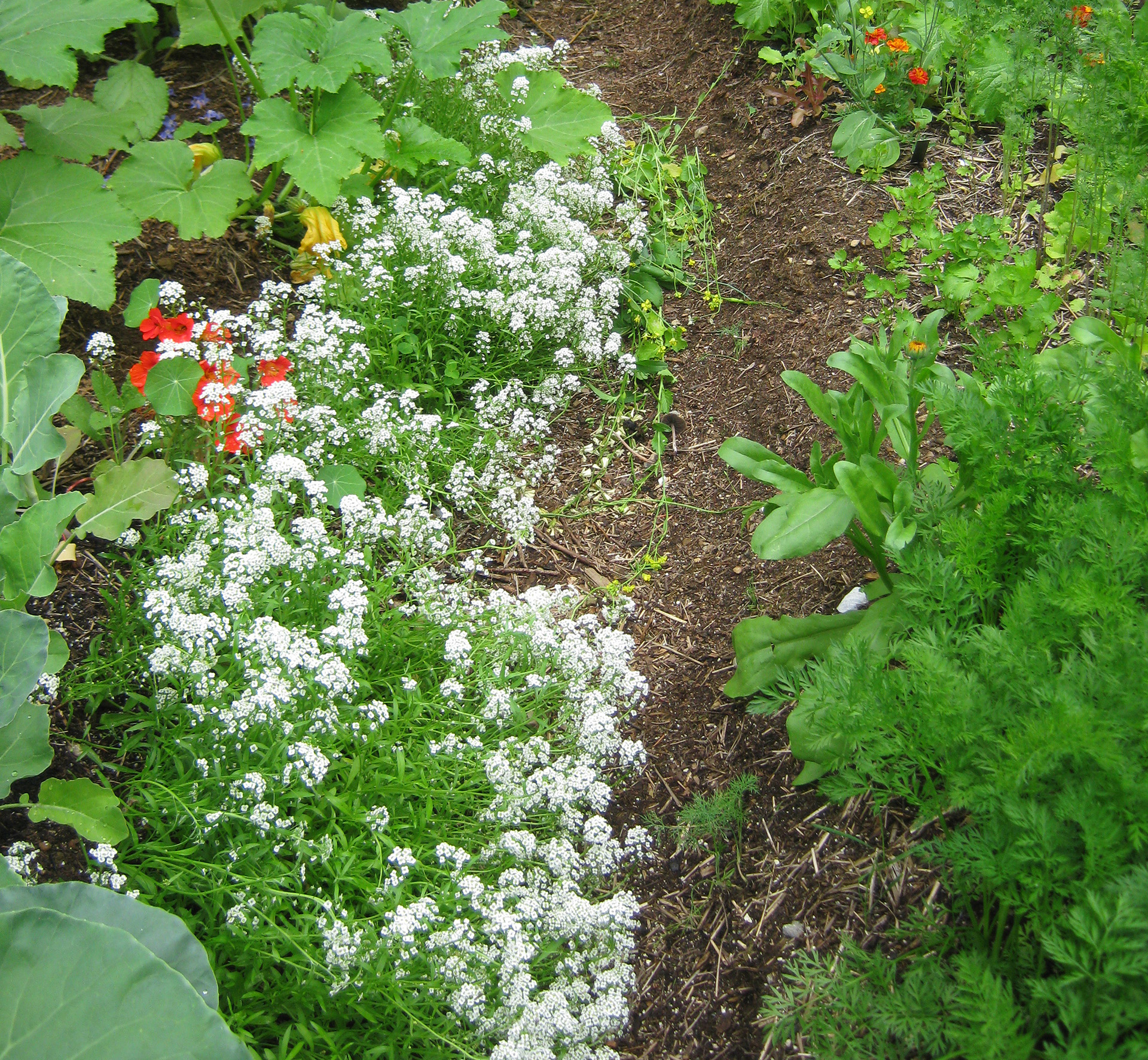
Permaculture is a design system, and within that system are a multitude of techniques and strategies that we can use. Which ones we use to build a garden will depend on many things: where we live, what our climate is like, what we want to grow, how much space we have, and the list goes on.
I’d like to show you a few different permaculture garden design ideas, and their attributes, so that you can choose the best design to suit your situation. For instance, the first thing you probably need to look at is size.
Are you on a typical city lot, with a small front yard, and a slightly bigger backyard? There’s a garden design for that. Do you have a little more space, maybe an acre or two that you’d like to convert into growing space? We’ve got you covered.
Gardens come in all shapes and sizes – it’s definitely not a once-size-fits-all thing. But by the end of this article I hope that you will have a better idea of what sort of garden you would like to build, and the abundance of food that can be grown, even in a small garden.
Pick your garden design style
Whether you have acres to work with, or a tiny postage stamp yard, or even just a balcony, there is always a way to incorporate a food growing system into your life.
Here is a list of garden types, with a quick definition of each. We’ll get a little more into each one later on. And I’ll be writing posts that deal specifically with each type. But in the mean time, here is a bit of information:
- Container garden – If all you have is a balcony or a front step, there are plenty of herbs and veggies that happily grow in containers. You can grow everything you need for delicious, healthful salads in a small container garden.
- Herb spiral – A herb spiral is one step up in size. This has the potential to hold MANY useful herbs, as well as quite a few different vegetables. Read my article on creating your own herb spiral.
- Small kitchen garden – If you have a sunny space in your small yard, planting a small kitchen garden is not only quick and easy, but it will save you money. No need to drive to the store. You can supply all of your vegetable needs all summer long!
- Large kitchen garden – If you have more space, make a bigger garden! With a larger garden you will now be able to start doing a little bit of food preservation, so that you can enjoy your harvest into the winter months as well. Herbs are especially nice to have on hand in winter.
- Main crop garden – A main crop garden is where you grow the big things that generally take all season to grow, and that can be harvest all at once and stored for the winter. Potatoes, squash, and dried beans and peas fit into this category. Of course, you’ll want to have a much larger parcel of land for this kind of garden.
- Forest garden – Oh, how I dream of having a forest garden – or a food forest, as it is generally called. The idea of a food forest is that it utilizes all the different layers of a natural forest – from the ground cover, to vining crops that climb into the trees – to grow food. Very exciting stuff.
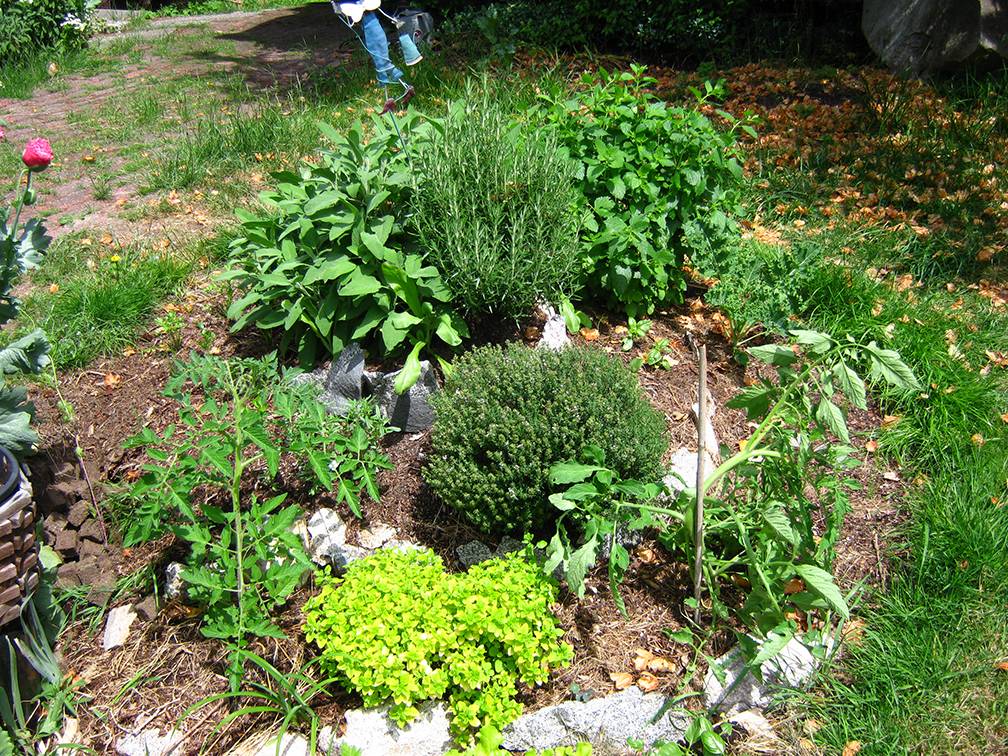
How big should my garden be?
The type of garden you build in your yard will first be dictated by the amount of space you have. If you have even a small little square of sunlit grass, you can build a garden. Even a sunny patio or apartment balcony can host quite a bit of food growing potential.
If you have a larger yard, and want to build a bigger garden, here are the questions you want to ask yourself:
- How much space do I have? The answer will of course dictate the size of the garden.
- How many people am I feeding? This answer will dictate how much of each vegetable you should grow.
- What do we like to eat? Yeah, it’s a no-brainer; but it’s an important question for each person who will be enjoying the harvest of this garden to answer.
- Can we grow all year, or do we have a short growing season? If you can grow in winter, then you can design crop successions that keep your garden producing all year. If you have a short growing season, you might want to grow some produce that is good for winter storage.
- What kind of perennial foods do we like/can we grow? Perennials are great. They keep coming back year after year, and there is much less maintenance than planting annuals each year. Fruit trees, berry bushes, and many perennial vegetables are a great idea for a home garden of any size.
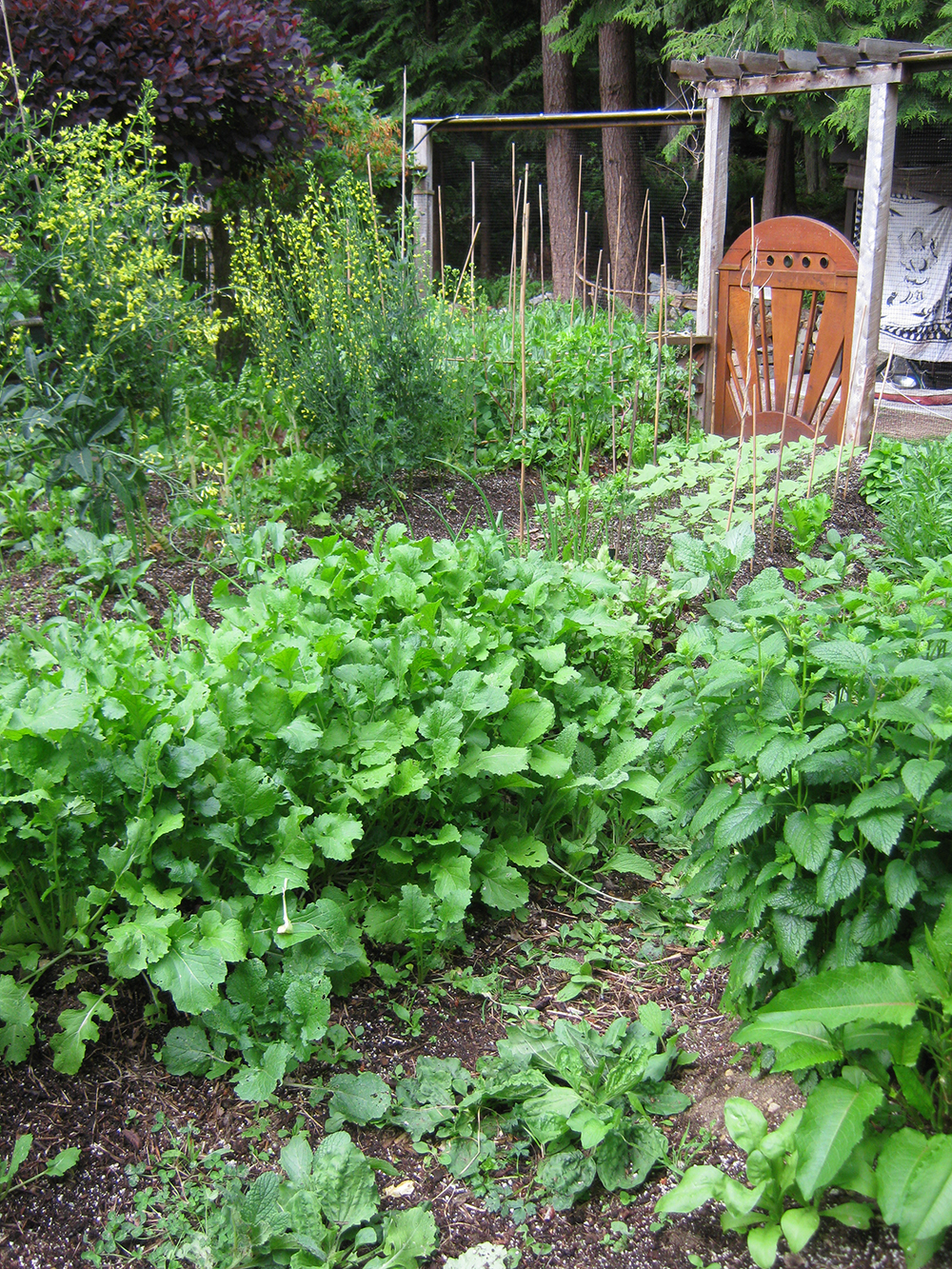
What kind of garden should I grow?
The more space and time you have, obviously the bigger your garden can be. But if you have only a small space, or limited time to spare for gardening, you can still enjoy the experience of fresh homegrown veggies and herbs.
For the smallest spaces, a herb spiral (or a mini kitchen garden, as I like to call it) is brilliant. It can be as simple as a mound of soil, planted with your favorite herbs, and a few veggies such as salad fixings. Or you can get more elaborate, with bricks or stones neatly stacked. I wrote all about it in this article.
If you have a little more space, and a little more time, you can plant a small kitchen garden. The idea of a kitchen garden is that it is close to your kitchen, so you can nip out and harvest fresh herbs and veggies for dinner. These are the things that are best eaten fresh, as opposed to main crops like corn, squash and dried beans.
A kitchen garden, whether large or small, will generally contain salad ingredients such as a variety of greens, tomatoes, cucumbers, carrots, and herbs; as well as other things best eaten fresh such as broccoli, snow peas, Swiss chard, kale, etc.
The size of your kitchen garden depends on the space you have, the time you have, and how many people you hope to feed from the garden.
I suggest you start small, and work your way up. If you jump in with both feet, you might get overwhelmed and think that gardening just isn’t for you. And I don’t want that to happen! I want you to think, “Wow! I love my garden. I think I’ll make it bigger!”

More space, bigger gardens
If you are blessed with an acre or more of land, you can start to move into the bigger gardening ventures, like main crop gardening, and food forests. Let’s start with a main crop garden.
Because some vegetables take a long time to be ready for harvest, they tend to take up too much space in a kitchen garden. Squash need room to spread and grow. And in order to grow enough potatoes to store for winter, you need lots of space.
That is what a main crop garden is for. In permaculture terms, this kind of garden is in Zone 2 – a space that we don’t visit near as often as the Zone 1 kitchen garden, but still needs our attention for weeding and such. (More about Zones coming soon.)
So, if you have the space, you can now start thinking about growing food for storage, not just for fresh eating. That’s pretty exciting. I can’t wait to be in that position again! Coming soon, I hope.
If you have the space for a main crop garden, hopefully you have the space for a food forest! Basically, a food forest is modelled on a typical forest, which has different layers of growth, and a diversity of species. When we design the forest, we can make it a very useful forest, with fruit and nut trees, berries, and a wide variety of other edible plants.
Suffice to say, a food forest is the ultimate permaculture ideal. It is mainly perennial, so it is much easier to maintain than a garden planted with annuals. It just keeps growing and producing more and more! How perfect is THAT?
So many gardens, so little time. But that won’t stop us, will it? Let’s choose a site, and decide what to grow in your new garden.
Choose a site
As I explain in this post, there are a few things to keep in mind when situating a garden. But basically, you want to have access to water, get the best sun exposure possible, and put it in a convenient location.
What should I grow in my garden?
Ah, and now the fun begins. Seed catalogs! Oh, the joy we gardeners feel when the new seed catalogs come out. Even if we’ve read the old ones twenty times, we still pour over the new ones like we’ve never seen them before. It’s kinda our thing.
Before you go ahead and order one of everything, let’s look at how much to grow, and what will actually be eaten.
What do you all like to eat? This is an important question to not only ask yourself, but to ask anyone else who will be eating from the garden. If you’re the only one who likes eggplant, you only need maybe 1-3 plants.
But if everyone loves salads, you’ll want to plant a wide variety of different salad greens, some tomato and cucumber plants, and some carrots.
Or if stir-fries are popular in your household, that could dictate what is planted – think lots of broccoli, zucchini, carrots, pac choi, mustard greens, and all that yummy stuff.
So have a look through the garden catalog – or website – and enjoy the gorgeous pictures and tantalizing descriptions. And then come back to reality, as all gardeners sadly must, and just order the things that will actually be eaten. This is especially important in a small garden, where space is at a premium.
You can’t go wrong by starting here with Seeds Now, organic, non-GMO seeds at great prices.
Create a planting plan
The bigger the garden, the more intricate the planting plan can be. But I try to keep it simple. And I almost never actually follow the plan exactly . . .
With a few simple guidelines, you can quickly plan your permaculture vegetable garden. Don’t worry too much about companion planting, or what doesn’t like to grow next to what. Healthy garden plants will generally do fine, no matter what other vegetables they’re growing next too.
- Tall plants at the back, shorter plants at the front – the front being the sunny side. The exception to this rule is for things that like it a bit shady and cool, such as cilantro and lettuces. You can plant those behind the tall plants.
- Make sure you leave enough space for the plants to grow. I know it looks really bare at the start of the gardening season; but believe me, it will soon fill in. And you’ll want your veggies to grow to their full potential, so give them the recommended spacing.
- Interplant with herbs, flowers, and alliums for pest management. Lots of scents and colors can often confuse pests, and make it hard for them to attack their favorite garden vegetable.
- You don’t have to plant single varieties in straight rows. You can plant a little here and a little there. Mix it up. This is called a polyculture – as opposed to a monoculture, like contemporary agriculture is fond of doing – and will result in healthier soils, healthier vegetables, and a healthier you. Plus, it just looks great.
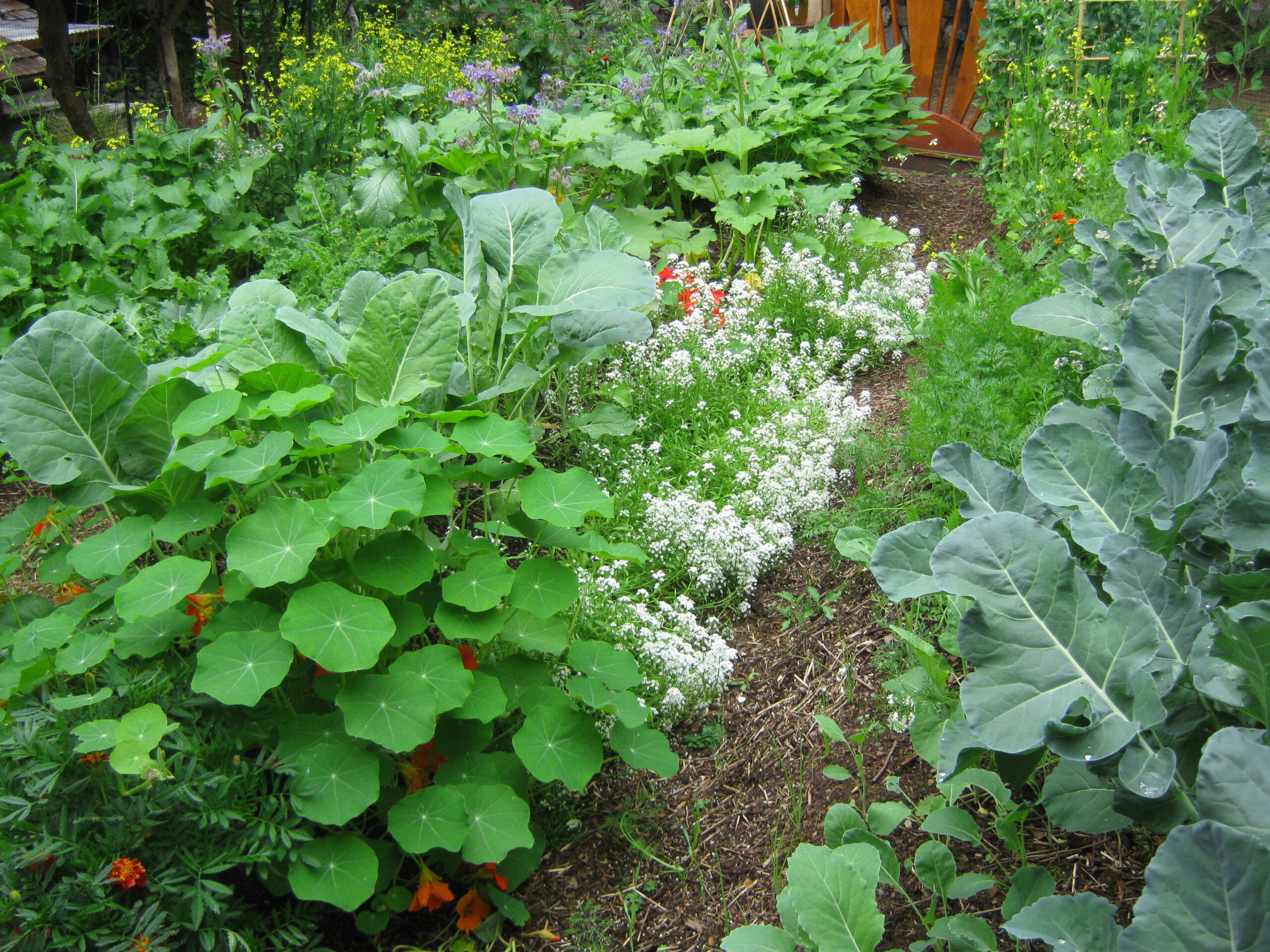
Learning as you grow
There are so many aspects to growing a garden, and I can’t possibly fit them all into one article. But if you continue to peruse what I write on this site (and there’s LOTS more to come!) you will learn all the little bits and pieces that make gardening easier, and learning more fun, I hope.
There isn’t a garden blueprint that will suit everyone, but there are so many permaculture design ideas to discover, you’re bound to find one that suits you and your situation.
If you have ANY questions about this article, or some wisdom of your own to share, I look forward to hearing from you. Please drop me a line in the comments below.
Stay tuned for more articles coming soon.
Happy gardening!
Health, Hope & Happiness
Tracy
